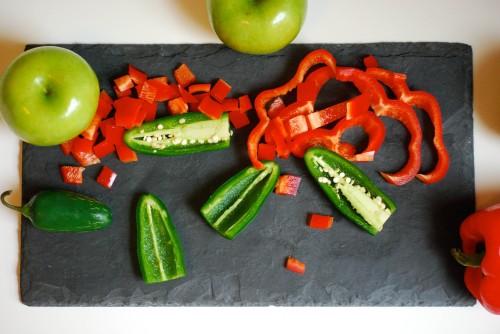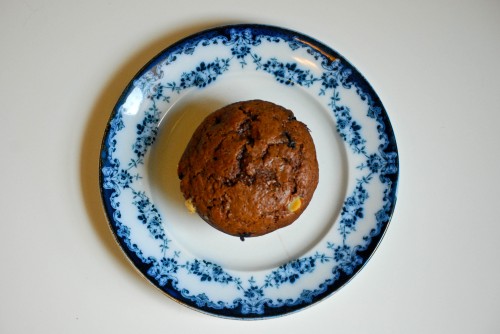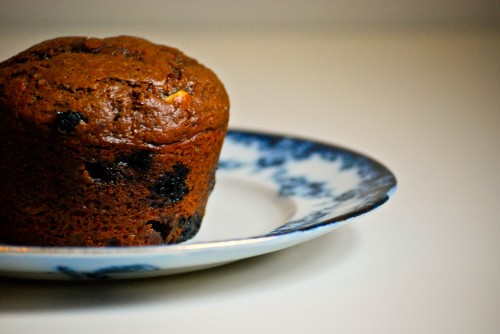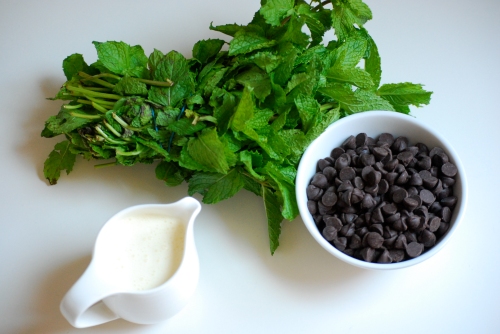We chose to leave Ninh Binh, sun low and air thick with morning humidity. Everyone on the bus was asleep, or at least pretending. The driver’s assistant, black hair orange from bleach, switched on his mono-rhythmic Vietnamese pop music. I grabbed my iPod. We made it to Hanoi in two hours–our last night before 2 days in Ha Long Bay and a flight to Japan.
Hanoi transformed; it was familiar and comfortable. Our old hotel and a morning bowl of red fruit crawling with ants. Unlimited choco pies. The snaggle-toothed pug next door and her sidewalk puppies. The crooked streets around Hoan Kiem Lake untangled. We knew how to walk into traffic and survive.
More transportation. At 8 the next morning a minibus arrived to take us to Ha Long Bay. We spent hours threading traffic, my head on James’ shoulder, his eyes fixed on the road. And then the bus stopped. We scrambled out to the docs–the city of Hanoi was floating on water; motorbikes were replaced with small ships.

In sunshine and heat we waited for the boat. A boat that looked too tall and thin to float. Like the slightest breath of air would tilt it into the opaque green water. A boat of intimidating age. The dark wood stain, applied in thick layers over several years, rolled from the siding in lines, like neglected drops of glue left to harden on a repaired chair leg. Everything from the floorboards to the pull-string wall fans creaked and murmured. Welcome to the Christina.
Unguided we jumped on, throwing our bags in a pile on the deck. The dining room was set with white table clothes and wooden benches. Everything inside was covered in the same glossy wood stain. We sat down with three French travelers. Of the three, I only remember the name of one. Eva had the best English and was outspoken. She dressed in rugged natural colors, big silver jewelry clashing with her tanned skin. She was most concerned with matters of culture and authenticity. To her left, the second companion with flyaway blond hair and the wide-eyed short face of Emily Watson sat next to the lone male, who was tall and goofy and never changed from his red Hawaiian shorts printed with white aloha flowers. I’m not sure if he owned a shirt.
From the galley, in some hidden portion of the boat, lunch was served family style on stainless-steel platters. Fried squid parts and rice yellow from spices. Silken tofu and scallions. An entire fish so tender and juicy that our chopsticks were all we needed to peel flesh from bone. Grease and strong flavors and a cold beer.
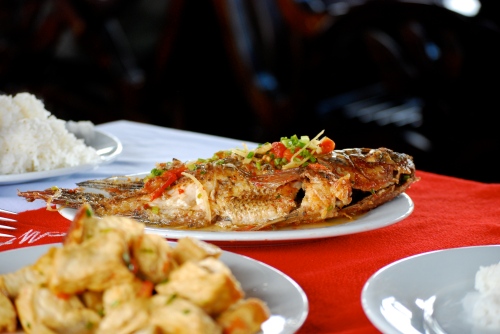
Eva was shocked. Not by the squid or the whole fish staring up at her, but by the style of dining. Is this authentic? Is this really how they eat here? We are all supposed to take from the same plates? I began to assume the general absence of Chinese restaurants in Paris.
The boat was warm on deck and we each had more beer to stay cool. The Parisians stripped down to swimsuits and piled on sunscreen, while James and I regretted leaving our suits packed away in our luggage. Hundreds of limestone islands passed by and each formation of any acclaim was highlighted by the tour guide. “See that one? It is kissing rooster!”

Our Parisians counterparts lit up three cigarettes, lighter exchanged one by one for a cupped hand to shelter fire from wind. Their attention–or curiosity–turned to us. “What are you doing for the 4th of July?” It was August; I was confused. “What do you mean?” “Do you hang American flags all over? I think that is so cute. In France we would never do that. Not–how do you say–patriotic.” Realizing that Eva had confused present tense and past tense (but who cares, her English was better than my French), we continued to stumble through conversation about the celebration of French and American revolutions.
We passed floating villages and crossed streams of boat traffic. We snapped photos and drank more beer. And we drifted towards land, a dock in the distance. This was not our final destination, merely a stop along the way. A giant cave discovered by the French and lit up in reds, oranges, greens, and blues by the Vietnamese. Tourists were ushered through in a single file line, impressed by the wide open space and over-the-top lighting. James and I politely excused ourselves and worked our way through the cave. Organized tourism was keeping us from our final destination–Cat Ba Island. Waiting to get back on the boat, we watched food vendors throw 5 gallon buckets of waste into the water. Fish guts, juiced sugar cane, dirty water, fruit peels, motor oil. An UNESCO World Heritage Site well cared for.



Cat Ba Island
As soon as we docked on Cat Ba Island, a swarm of women selling food and drink surrounded us. Like the seagulls in Finding Nemo they sent up a chorus of “You buy, you buy, you buy, you buy.” Piercing, unrelenting–for 30 minutes while we waited for the bus to take us to town. A stocky man from Israel was irritated. No, he did not want to buy water from them… he already had a bottle of water, see? But, would they like to purchase his bottle of water? The women giggled, decided to give up, and sat down between us and the Israeli. They kept us company, even though we were only able to communicate through gestures and more giggles. Their oblivious husbands sat in a small house at the other end of the bus turnaround watching cartoons, drinking sodas, hardly working.
Waiting and waiting and finally another bus. Cat Ba Town was on the other side of the tropical island. Large banana leaves, exotic flowers, a symphony of bird calls–it could have been a deserted island, a Lost island, if not for tucked in lean-tos and the signs of new construction for high-end resorts.
Cat Ba Town was also deceptive. Pink and yellow and teal mid-rise buildings clashed against the moss-covered limestone cliff before us. Tourists–mostly Vietnamese–moved about with sand in their toes and sun on their backs. That thing about island time penetrated daily life. Slow and relaxed. The crescent bay cradled more single platform houseboats and floating restaurants, their phone numbers advertised in giant neon letters. But when pressed further, the town revealed a lonely character. The buildings were all hotels. The tourists were temporary, the population was fleeing. A place to sleep while we dreamed about visiting the beaches and hiking in Cat Ba National Park.

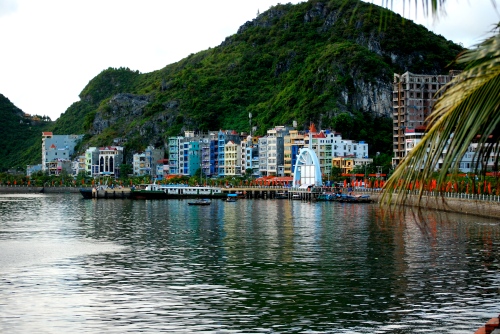


Cat Ba National Park
We were the first visitors to the park that morning. It was silent and overcast and raining. Or was it just so humid that it felt like rain? Before the real hike began, the path was paved and flat. The overgrown field was full of strange butterflies. Our guide–a woman in her forties wearing flip flops–hurried us along, pushing toward the canopy of trees ahead. The path turned to mud and humidity soaked rocks. Large drops landed on our heads from the trees above. Mosquitoes buzzed in our ears and left pink welts on our skin. They were particularly fond of the blond French girl. Almost in tears, her legs lumpy from bites, she was helped back to the village by our guide. We were abandoned.

The path forked. A sign with a simple map gave us two options–the “easy way” or the “adventure way.” Choosing adventure, we turned into rock climbers. We lost the trail several times. We saw land crabs but no Cat Ba Langur. We ignored the mud covering our arms and legs. We made it to the top. Our Dutch companion suffered vertigo and lay horizontal on a rock to ease his spinning head. We snapped pictures, now high above the canopy, and listened to the park wake up. Birds and bugs and fellow hikers, way down there, imitating the howl of the langur.




We spent our last day drinking beer on the beach. At night we packed our bags for Japan and prepared for the bus ride back to Hanoi.



